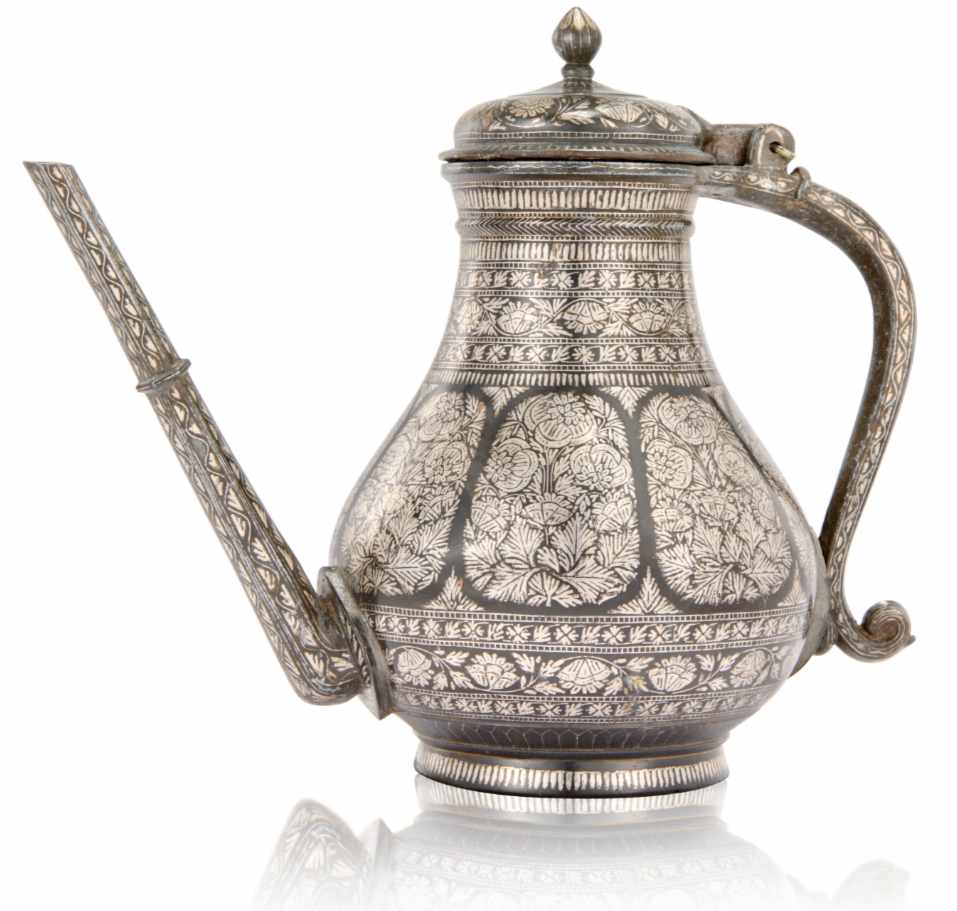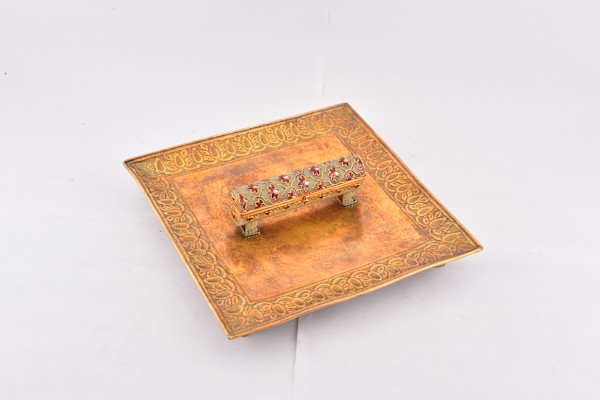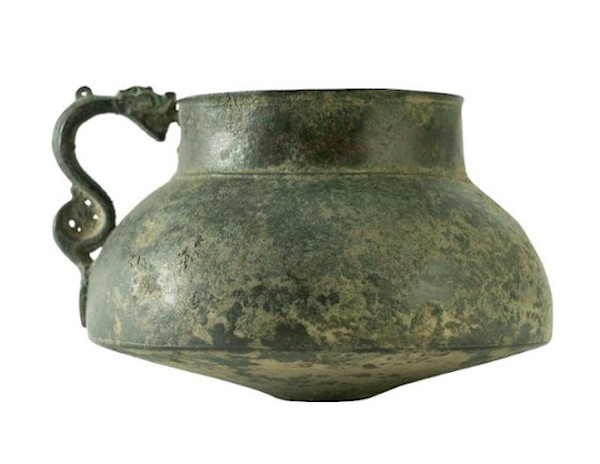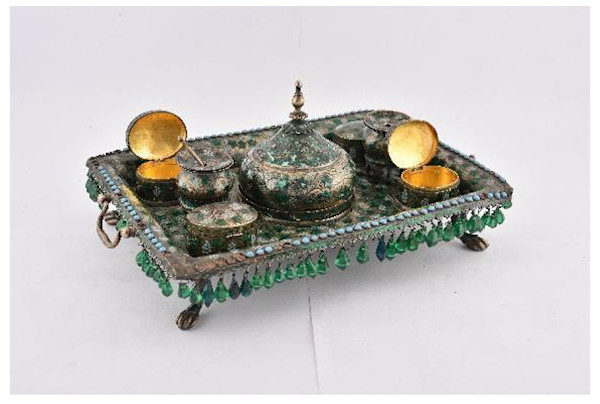With forms that whisper of empire and elegance, these silver-inlaid Bidri ewers command attention not merely as vessels, but as sculpted narratives of cultural transition. One, fashioned from patinated white brass, is adorned with symmetrical panels of delicate floral sprays framed by slender bands of meandering vines. The other contrasts with a bolder aesthetic—a surface dominated by teardrop motifs swirling with vegetal designs and crowned by six radiant, chrysanthemum-like blossoms. Each ewer is fitted with a hinged lid topped by a bud-shaped finial, a curved loop handle, and a sharply angled spout. Their silhouettes reflect a pivotal shift in design sensibilities, from the slender- necked Iranian form to the more rounded-neck design that became characteristic of Indian craftsmanship from the 18th century onward. A closely related example of the white brass ewer resides in the Dr. Bhau Daji Lad Museum, Mumbai, offering a tangible link to this enduring legacy of craftsmanship.
- Subject Matter: Objects
- Collections: Objects











